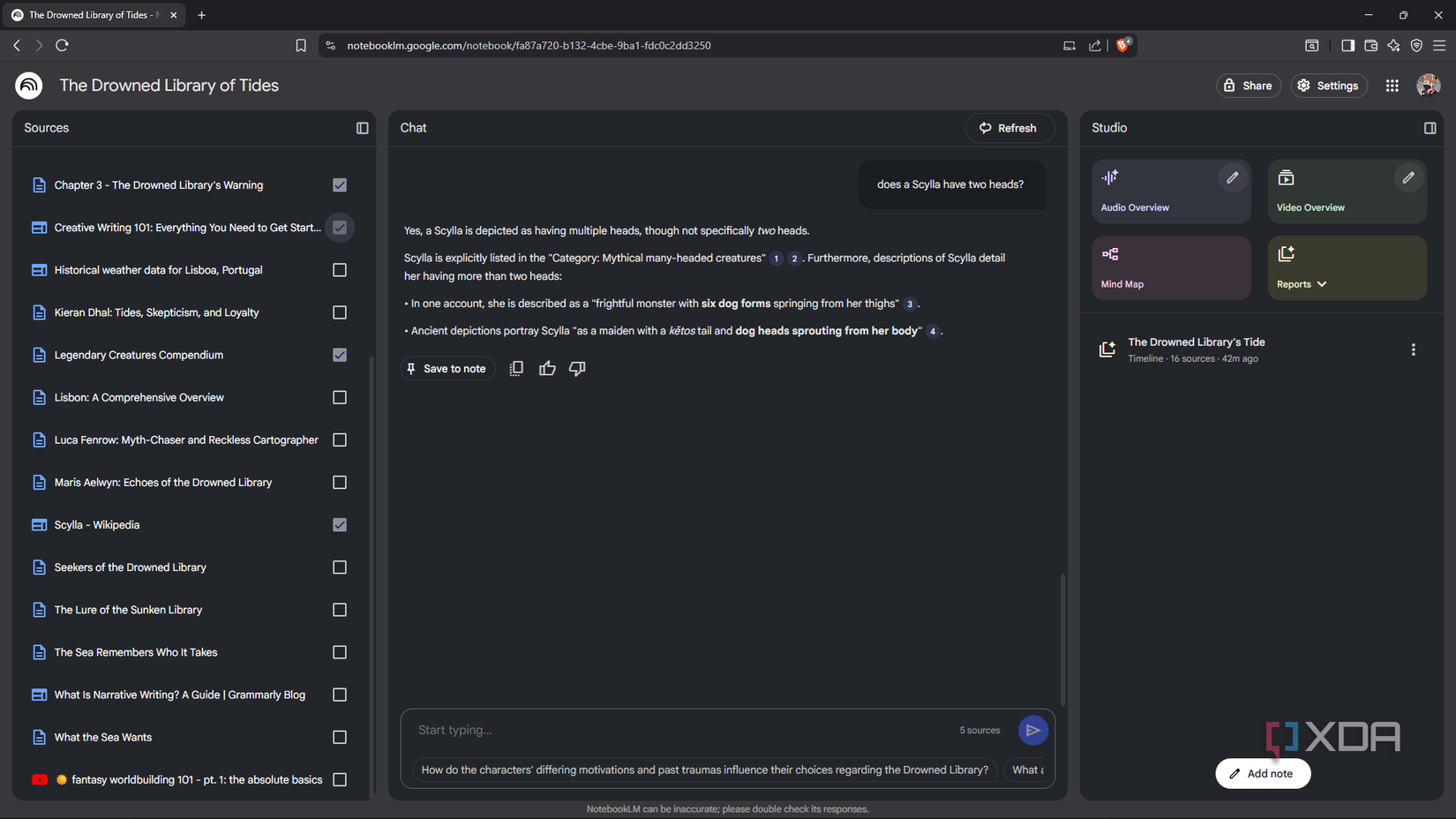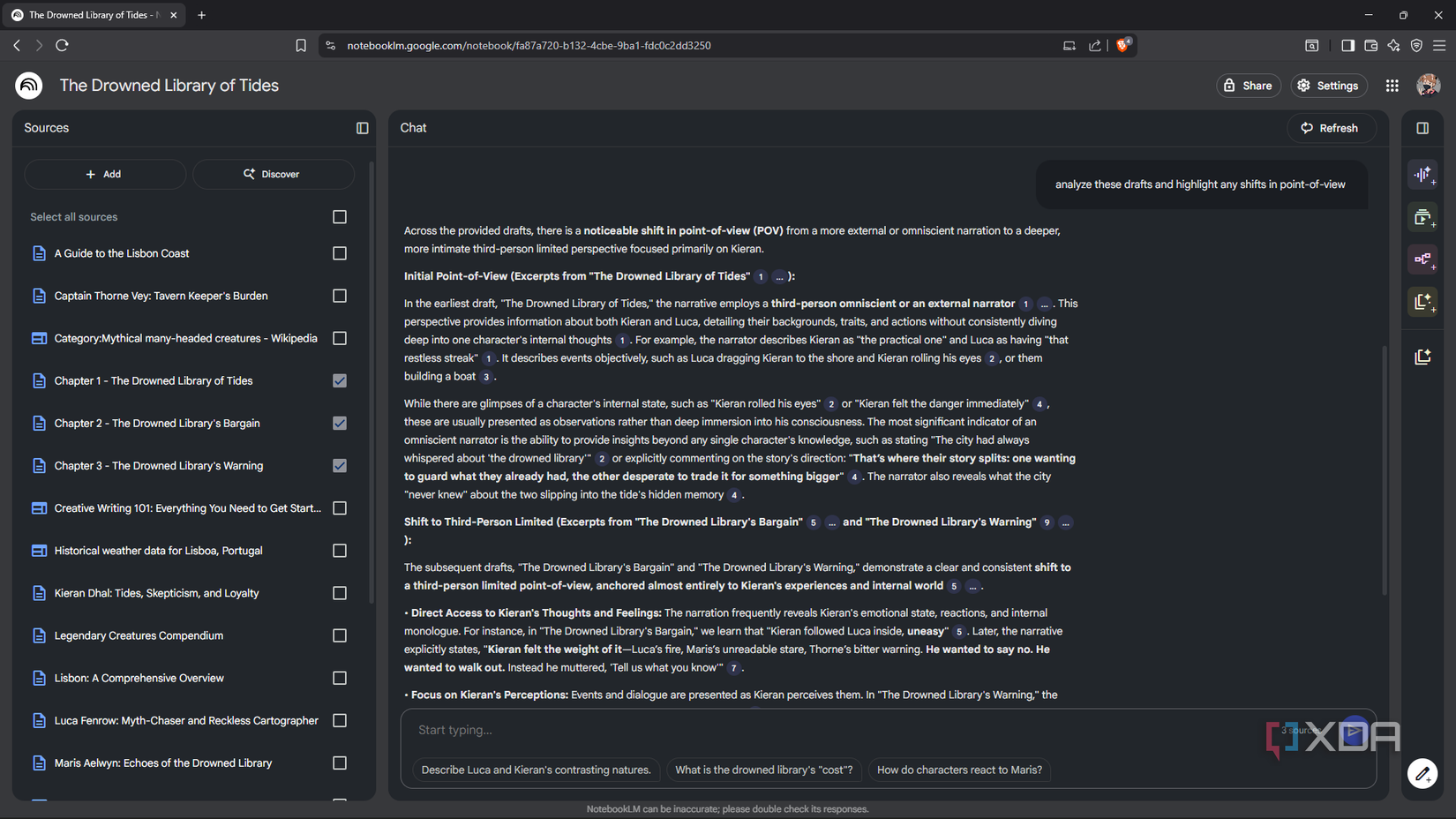I write a lot: articles, novel drafts, research notes. The struggle isn’t always the writing itself, it’s managing everything around it. I have so much scattered research and half-written drafts that always end up buried somewhere. I’ve also tried dozens of notes apps and AI tools, but many of them overwhelm me with features or give me generic results.
Then I started using NotebookLM. At first, it was just to organize my digital life better; pairing it with Figma was a game-changer, and it also helped me learn Blender. So, the natural next step was pairing it with something I do every day: write. By loading in my own notes, drafts, and references, it acts as a writing partner of sorts. I’ve been using it for several writing projects, and the difference is massive. Here’s how NotebookLM is helping me become a better writer…
Instant summaries and recaps
I don’t have to worry about repeating or contradicting myself
One of the biggest traps in writing is losing track of what I’ve already said. NotebookLM fixes that by giving me quick and context-aware summaries of my own notes. This is particularly helpful for fictional writing because there are so many details to keep track of. NotebookLM steps in as a continuity editor. All I have to do is keep feeding it my notes and drafts, then I ask it to give me short bullet lists or one-paragraph summaries of things like character backstory and the rules of my magic system whenever I need to recall that information.
The key, here, is in making sure every source is named clearly, so I can be more selective if needed. Excluding some sources is actually one of the best ways to get more specific results with NotebookLM. For example, if I want to recall details about character B, then including notes from character A might derail the AI’s answer. This method is not just a memory aid, it also keeps me from repeating or contradicting myself. I imagine this would be incredibly helpful for academic writing, too.
Another thing I’ve been playing around with is Timeline. This feature has reportedly been removed, but I’m able to access it at the time of writing — either I’m on a slower update path or Google quietly re-added it. Whatever the case, it’s been incredibly helpful for maintaining consistent timelines throughout my story. If you can’t access this feature, you could always prompt NotebookLM to give you a chronological timeline of the events you added (just make sure all your sources are selected for this).
Quick fact-checking
Verifying the details

Every writer probably knows the rabbit hole: pause to confirm a detail, open a tab, only to find yourself scrolling through a completely unrelated thread 20 minutes later. NotebookLM cuts that detour short. By loading in my own sources and research notes, I can quickly fact-check inside my workspace without bouncing between tabs.
This may not seem as useful for fictional writing as for journalism, but worldbuilding leans heavily on real-world references like geology, history, law, and physics. For example, I have some scenes set in a coastal city and need to know whether the sun rises over the ocean or sets behind it. Dropping geolocation data and other city-specific information into NotebookLM lets me quickly check that I got those facts right, without needing to take extra time to read those sources myself.
Voice consistency
Using NotebookLM as a style mirror

Plot details aren’t the only things that slip through the cracks; writing style does, too. Regardless of what I’m writing, a technical article or a novel chapter, I sometimes drift from first-person to second-person, and from past tense to present tense. Having my drafts in NotebookLM lets me ask it for feedback on my voice and style consistency. That’s huge when I’m juggling multiple projects with different styles.
The key is in crafting the right prompt and drawing from the right sources. For example, let's say I want to compare my style across two different chapters. I'll upload those drafts as two separate sources, only select them as my sources, and prompt something like:
Analyze these drafts and highlight any shifts in tense (past, present, future) that are inconsistent.NotebookLM can pull any data from my drafts that I ask it to. For example, in first-person writing, we often overuse the word "I" — NotebookLM can highlight every paragraph that has more than four "I" words or every sentence that starts with an "I".
The writing partner I didn't know I needed
It's not that NotebookLM is doing the work for me, it just helps with the heavy lifting behind the scenes. Recalling details, maintaining timelines, checking facts, and flagging style inconsistencies are the more tedious, analytical aspects of writing that can gobble up time. NotebookLM cuts through all that noise for me so I can focus more on being creative.

.png)











 English (US) ·
English (US) ·